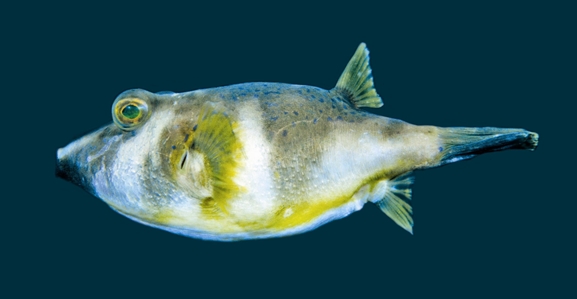General Description
Body elongate, rounded, densely covered in small spines to tail base; chin not prominent; nostril with single small tentacle; pectoral fin small, somewhat bilobed. Pale to medium brown or grey above, pale below, with a thin, black ring around the pectoral-fin base. Adult males with blue spots on head and sides, and a thin, blue margin around the black ring. To 25 cm.
Biology
This species is often taken as bycatch in commercial trawls.
Habitat
On sandy bottoms and rocky reef in bays, estuaries and along the coast, in depths of 1-146 m.
Soft substrates
Reefs
Distribution guide
Southern Australia.
Species Group
Depth
Shallow (1-30 m)
Deep ( > 30 m)
Water Column
Max Size
25 cm
Harmful
Poisonous toxins in body.
Commercial Species
No
Global Dispersal
Native to Australia
Conservation Status
- DSE Advisory List : Not listed
- EPBC Act 1999 : Not listed
- IUCN Red List : Not listed





